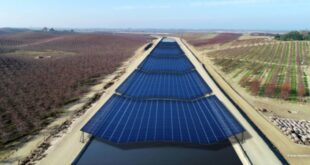The State Water Resources Control Board (SWRCB) released a new, updated proposal on Thursday that seeks significant increases in flows to three state rivers – the Stanislaus, Tuolumne and Merced rivers – to the detriment of farmers in the San Joaquin Valley. The SWRCB is proposing to increase flows to 30 to 50 percent of what would naturally flow in them and an average 40 percent from February to June each year. This translates into less water that would be available for urban users and farmers in the northern San Joaquin Valley.
The proposal is out for public comment until Nov. 15 and could go to the board in early 2017 for adoption. The initial plan from 2012 was for 35 percent flows.
“This new recommendation of 40 percent unimpaired flows is outrageous and really just a death sentence for our economy here,” said state Assemblyman Adam Gray, D-Merced.
Gray and local irrigation districts are infuriated by the new proposal and have vowed to fight it. The Modesto and Turlock irrigation districts have launched a campaign called Worth Your Fight in response to the proposed cutbacks. The two districts claim that the area served by the rivers would have lost an additional 6,576 jobs and $1.6 billion in income in 2015 had the 40 percent proposal been in effect.
“Our community has never faced a threat of this proportion,” the districts said in a joint statement. “… This water grab will impact our region’s way of life.”
But environmentalists are equally convicted in their stance.
“There is no evidence that 40 percent is going to cut it,” said Jon Rosenfield, a salmon biologist at the Bay Institute, an environmental group. “All the fish and wildlife agencies have said that way more than 40 percent of tributary flows is necessary to protect the hardiest fish, the salmon, and that’s not counting other fish and wildlife that might require more flows. The river (San Joaquin River) has been mined almost out of existence.”
Rosenfield contends that less than five percent of San Joaquin River’s water currently reaches the Delta. What is left is often a “poisonous soup” of farm runoff and has resulted in toxic algal blooms in the southern delta.
“At the end of the day, fish need more water,” said Eric Wesselman, executive director of Friends of the River. “You can’t get around that.”
SWRCB Chairwoman Felicia Marcus told reporters in a conference call that the plan seeks to balance farm and city water uses with the need to improve fisheries and reduce salinity in the Sacramento-San Joaquin Delta.
“We can’t ignore the flow needs anymore when you look at the magnitude of how much we have taken out of these rivers,” she said. “This should have been done earlier, but it’s a hard thing to do in the worst drought in modern history.”
In addition to the woes the new plan would foist upon farmers in the San Joaquin Valley is the potential trauma for the city of San Francisco. The Tuolumne River is one of the most over-drafted rivers in the state. The city of San Francisco draws its water from the river; the river provides water to 2.6 million residents and businesses in the Bay Area.
The Tuolumne was damned in 1923 for the building of the O-Shaughnessy Dam. The dam and the Hetch Hetchy Reservoir are the centerpieces to the Hetch Hetchy Project, which began delivering water to San Francisco and its client San Francisco Bay Area municipalities in 1934. The Hetch Hetchy system has been contested by environmentalists from the beginning and is still contested today though the city of San Francisco has continued to assertively defend its water rights.
Charles Sheehan, spokesman for the San Francisco Public Utilities Commission, said that though the agency has not yet seen the full draft rule, for Bay Area customers “this could have significant impacts in drought years and in post-drought years when you’re trying to refill your system.”
 California Water News Daily Your Source For Water News in California
California Water News Daily Your Source For Water News in California


